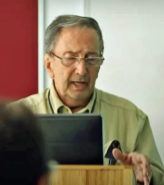| 个人简介 | |
|---|---|
 Prof. Lineu Castello Federal University of Rio Grande do Sul, Brazil |
|
| 标题: Life Takes Place | |
| 摘要: The presentation elaborates on the concept of place, a key-concept in my urban-architectural area of research. Thanks to this comes my approximation to studies of Psychology, especially to the environmental psychology area, recalling that both areas investigate relationships between people and environment – subjective and objective components of daily existential life. This interest in the conception of place explains my presence in this conference. Place is also the theme of my book “Rethinking the meaning of place”, published by Ashgate in 2010. In the book, place is regarded as a created environmental form imbued with symbolic significance to its users; the text emphasises the role places play in contemporary urbanization, since contemporaneity pose to my urbanism scholarship an environmental condition provocatively new: the world we live in is an urbanized one. And also, a highly technologically developed world, in which, new invented places seem to be frequently inserted by planning actions of ‘placemaking’ and ‘placemarketing’. Place represents the influence of society’s cultural behaviours on the shaping of the environment, morphed in diverse typological layouts: cultural and creative parks, multi-functional complexes, themed malls, revamped historical settings, sports complexes, integrated museums, multiplex cinemas. One of the basic queries of the research is whether urban societies will demand new behavioural spaces for their everyday living experiences? And, if so, which will they be? Three types of phenomena stand out in the resulting spatial expressions: those whose configurations denote the presence of historical facts, called 'places of memory'. Those conformed by phenomena accompanied by an aura of outstanding effulgence; 'places of aura'. And those pointing to a prominent grouping of individuals assembled within spatial territories marked by a distinctly perceptible identity, known as 'places of plurality'. Ultimately, the presentation more than seeking for a better urban design, as expected in the urban-architectural area, aims at contributing to create a transdisciplinary methodology for the production of places capable to accentuate the physical, cultural, and social identity ingrained to certain spaces, attributing them the qualification of ‘places of urbanity’. | |
